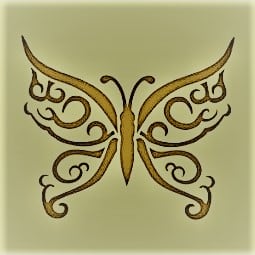September 2021 Newsletter: Ancient Greek and Egyptian Mythology inspire Modern Art

Mary Zagoritou of Mary Zagoritou Gallery on the last evening of September 2021 visited purposely one of the many galleries in gallery rich London Fitzrovia, attracted by an exciting theme and title full of mental pictures of sea c olours and promises of greek associated elements. I have experienced own eyes the beauty of a modern art curation where the artworks are staged to tell the story of a new myth about the sisters Aqua and Marina created by the artist Sofia Mitsola. Sofia's Mitsola exhibition full title was excitingly Aquamarina: Crocodilian Tears. The story was unfolded in striking colour, bold form and feminine shape restructuring and representing archetypal marine predators and beasts from a woman's point of view. The new mythical characters relate to the Ancient Greek Mythology Aegean Sirens, Medusa and the Egyptian Sphinx while their affiliates draw to the Argonauts, Cancer (Carcinus) and marine animals such as Helena Muraena. The artist spent time at the British Museum to research and collect ideas, develop figurative insights meaningful to her so that the characters of the new myth are esoterically formed entirely by the artist . Sofia Mitsola says that while she likes that her characters look intimate and vulnerable on the other end her own read challenges the dominant male view mostly objectifying women. I saw this on the artwork where the characters are shown in female empowerment and action to seek adventures, go hunting, look the viewer straight in the eyes, defining their satisfaction and pleasure. Aqua and Marina or Aquamarina are females challenging the norms of the male archetypal predator, by their aims and actions. They self define their pleasure into power dressing, then hunting, eventually catching their pray and not even being kind to it. The archetypal roles reverse. They are dressed to kill for their adventures with gems and pearls, sedative techniques inspired by the camouflage used by the marine life animals to attract their prey. Such as octapus is using stones for camouflage and seduction, Aqua and Marina are using pearls. The colours used on the paintings are inspired by gem colours, to create atmosphere and temperature. The artist uses the colour to communicate the warmth or coldness of the body, needed either to attract the prey or to repel the enemy. Other elements and clues for the development of Mitsola's story about the woman warrior are from the ancient Amazons as well as from the films Kill Bill and Jenkins Chan. Female favourite spa activities where feminine beauty, relaxation and power are placed on the artwork drew reference to the film Cleopatra. The paintings of Queen Elizabeth I at the National Portrait Gallery, London, are for the artist offering ideas for the seductive power.
The characters as feminine monsters and the element of mystic are within the triptych telling the third and final act of the Aquamarina tale. The crocodile beast is captured, killed and the sisters are vividly exhibiting facial pleasure from the outcome. Particularly the colours and the eye of the prey on each of the three art pieces, and shown in the gallery basement to reinforce the atmospheric mystique, spreads alluring feelings to the viewer, a discourse between the artwork and the unsuspected audience of fear and danger. The basement gallery walls were lined with velvet, adding to the mystic and pleasure of the happenings as the drama unfolds and the cathartic finale ends the story.
The artist says that the artwork is higher than the viewer and invites the viewer to be in power and make their own readings of the relationships of the characters and the dynamics within the story.
Alongside paintings featuring multiple characters resembling ancient Greek Caryatids, the exhibition included a black and white frieze-like drawing in charcoal which extended across two walls of the upstairs gallery, depicting a battle-scene between the sisters and their enemy, a vicious crocodile known as Crocovelus Niloticus.
The inclusion of Caryatids to the artwork drew reference to classical Greece where Caryatids symbolise the shameful position of women after a war is lost when women are put into slavery by the victorious enemy. Further, Caryadits symbolise unfairness, unjust separation and lonely life since one of them lives in the British Museum while its five peers are at the Acropolis Museum of Athens waiting the sixth to be reunited with them. On the artwork the five only Caryatids are present ,supportive buddies to Aquamarina, always being there for them.
The Thessaloniki School of Fine Art Greece and Slade UCL London educated artist Sofia Mitsola's exhibition Aquamarina: Crocodilian Tears was on show in Fitzrovia for 4 only days, it was the first of this scale exhibition of the artist who aimed to show more of the process of the making by adding bigger size paintings presented in a growingly transformative story of Three Acts. Act I is called The Dive, Act Two is named Cooperative Hunting and Act Three is Crocodilian Tears. Thus, the artist explains that the storytelling is complete with a start, a middle and an end of the story where full catharsis happens. The artworks were not on sale.
The artist's views are personal notes taken by Mary Zagoritou at Sophia's Mitsola discussion with Dr Flavia Frigeri on 30/9/2021 at Fitzovia. The article is written based on Mary's Zagoritou personal interaction with audience on the same day and the artwork exhibited. More photos of the artwork can be seen in Mary Zagoritou Gallery Instagram, Facebook Page and Twitter.
30.9.2021 Article and Photos Mary Zagoritou
